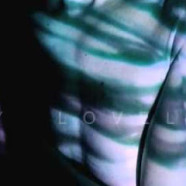Uruguay Lovely Maldita Music Video Q&A
Video artist, Doris Schmid, and author and composer, Christina Nemec talk with us a bit about their work and the concept for the music video and the inspiration behind the music, much of which consists of layers of field recordings from Christina’s travels through South America.
Femmecult: Tell us a bit about your individual works, and what preceded the opportunity to work together on this project.
Doris: I am a visual artist and my work deals mainly with time-based media like film, video, animation and installation.
Exibitions / Screenings (Selection):
2013 Musikprotokoll Graz (A) I Esszimmer Bonn (D) I Videowindow Zürich (CH) I 2012 Athens Video Art Festival Athen (GR) |
2011 ArtStays 9, Int. Festival of Contemporary Art Ptuj (SLO) | A.I.R. 4, substitut Berlin (D) | We are the artists, Kunsthalle Winterthur (CH)
| 2010 la nuit/videokunst, arte TV | Crosstalk Festival, Budapest (H) | Experimental Video Art 7, Bangkok University (TH) |
2009 Gegenwelten Künstlerhauskino, Wien (A) | 2008 Screenfestival, Oslo (NOR) | Instantvideo, Marseille (F) |
2007 emaf, european media art festival Osnabrück (D) | Videomedeja int. Videofestival Novi Sad (YU) | shiftfestival, Basel (CH)
I know Christina from a project called reise-radio (“voyage-Radio”), I think that was in 1999. The reise-radio was on the move with a mobile recording studio in central Europe, and radio artists of different stations shared the place or used the opportunity as ‘artists in residence’ to collaborate. So, I often work together with musicians for the soundtracks in my videoworks and installations. I like the work of Christina, so I asked her for some tracks for a film of mine, PROJEKTIONEN. And, for her song Uruguay Lovely Madita I realized the videotrack, it is kind of an exchange.
Christina: Chra is the alter ego of Viennese author, DJ, music addict and radio/TV presenter Christina Nemec. After a period experimenting with low frequencies and noise effects, Chra started to work on more club-friendly beats, using sinewaves processed through a tape recorder and other analogue and digital tools to allude to landscapes, territories, silence and extraordinary and extreme situations. She is also a member of Shampoo Boy and SV Damenkraft, has made performance works with Lydia Lunch, and runs her own label, Comfortzone. Chra likes to work on the idea of imaginary cinematic soundtracks.
Femmecult:Please talk about the concept of the video.
Doris:The act of the seeing interests me: If [it] refers to our picture of the world, and worlds of thought which are generated by the
What and How of seeing, [but] at the same time it is thereby limited. What do we see if we [are] seeing?
Femmecult: What was the process for developing the visual narrative?
Doris: I wanted to tell no story, but react rather to the mood of the music.
Femmecult: How did the sound design and composition of the song inform the visual aspect?
Doris: The main focus lies on the construction of two levels in the picture, a film in the film or the projection and the body. A procedure which puts the look before the decision to lay the focus either on one or the other level, or to perceive this duplication [rather] than unity.
Femmecult: The song is very cinematic in nature. Was this intentional, and did you create the song thinking there would be a visual counterpart eventually? Or, was is a joint effort to make a video/song from the start?
Christina: The song was originally composed for a queer musical burlesque: Orlanding the Dominant (based on Virginia Woolf’s Orlando). My band member Katrina Daschner, did write a text to the composition and also interpreted it live. The melody and mood of the song is influenced by David Lynch’s – Twin Peaks. Additional sounds and noises were recorded through traveling in South America and walking around on playgrounds in Vienna. Its made of layers of sound.
Femmecult: Doris, please talk about the technical aspects of projecting onto a human body. What was your process? What informed your decision to use certain body parts over others? Also please address the question regarding the exclusion of the head / face of the body.
Doris: The Body serves as a means for the projection, concerning the contents and technically. Technically seen, I realized first several video sequences with animals who look at us. Then we searched places on the body, that fit to the picture. These looks at the body corresponds to a close up, the whole one remains in the dark.
I wanted that the perception of the body to remain near with the abstraction. And the animals are acting as Tattoos which move, as soon as we observe them, or they feel observed.
Femmecult: How is the video/song’s title reflective of it’s content, if at all?
Doris: I hope, it does…! I had the idea from moved tattoos, [and] souvenirs of one travels, [perhaps] from a journey to Uruguay.
Femmecult: Is this part of a larger project or ongoing series?
Doris: I hope, We will see..!
Christina: Me too!
Christina Nemec online
www.comfortzonemusic.com
www.soundcloud.com/chra
www.soundcloud.com/comfortzone







